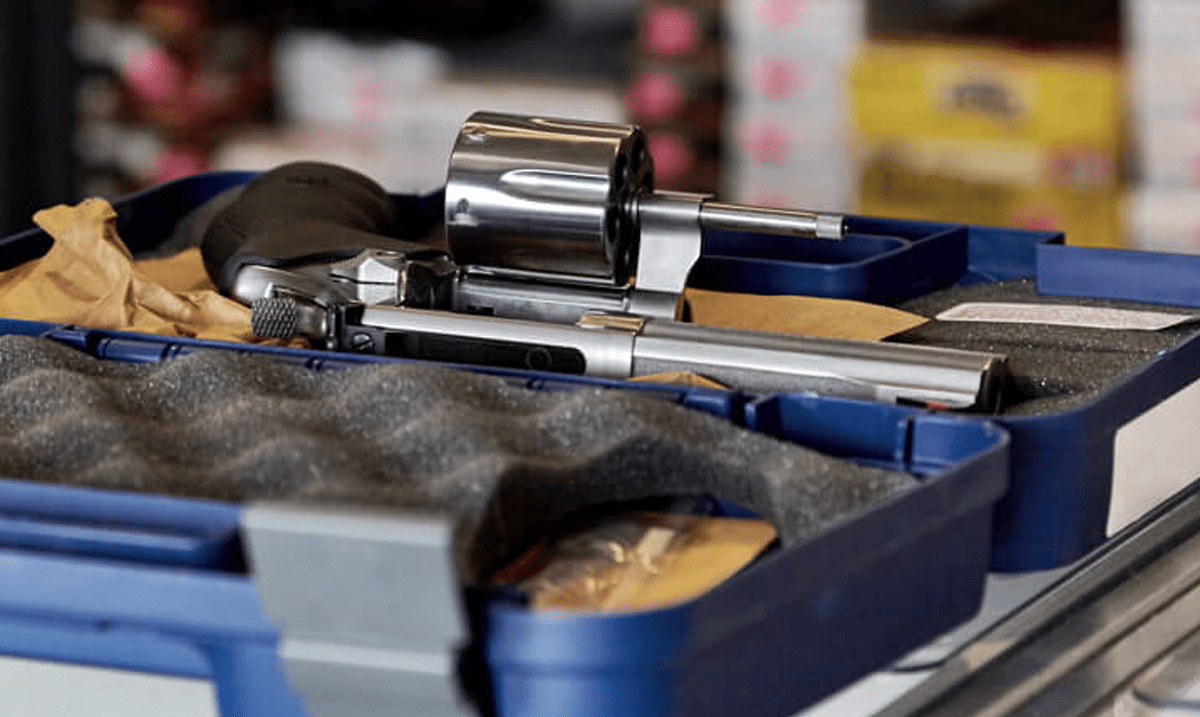 Back to News
Back to News
August 22, 2018
Is Your FFL Next On a Criminal’s Hit List?
Being an FFL comes with some angst, especially when you lock up each evening and head home leaving your firearms protected by gates, alarms, cameras and …
Wait a minute. Did I just say “protected by cameras and alarms?”

Today’s brazen firearms thieves are not deterred by cameras and alarms. If they were, the frequency of FFL burglaries we’re seeing now wouldn’t be happening. As I explained for a group during a recent Operation Secure Store workshop hosted jointly by NSSF and ATF, alarms and cameras only tell you how and when a burglary occurred. This is certainly critical to your overall security strategy, but today’s criminals are wearing hoodies and ski masks to avoid recognition by camera surveillance system and are in and out of your premises in under two minutes — and that’s sometimes long before your alarm company notifies you or the police of a break-in.
So, there it is. Cameras and alarms don’t actually protect and prevent criminal thefts. But what does? Short of removing all your firearms from cases and racks each evening — which is time-consuming and can damage inventory — what cost-effective strategies can you consider for ramping up your security program?
To answer that question, first, conduct your own security assessment and inspect to identify your vulnerabilities. Start out at the street or curb and work your way in, just like a burglar would:
- From the street or curb, does your place of business look like it’s going to be a challenge to break into?
- Are bushes, trees and foliage trimmed back to eliminate hiding areas for criminals while they attempt to penetrate your store?
- Are your exterior lights on timers and motion sensors? Do exterior flood lights identify after-hours activity and bring attention to people lurking? More lights are better than no lights in the middle of the night, when vehicles, neighbors and law enforcement passing by can be alerted to unusual after-hours activity.
- Can you use chains or gates to close off your parking area after hours and restrict vehicles from entering?
- Do you have bollards, boulders, oversized planters or other substantial obstacles installed to prevent smash-and-grabs through your doors, windows and other vulnerable areas? If not, can you park a company delivery vehicle in front of doors? Crime surveillance shows that physical barriers deter criminals, slow down the very determined and are perceived as making your store a hard target by thieves assessing your location for attack.
- How is your glass protected? 3M Lexan security film, laminated glass, roll-down or scissor gates and burglar bars all provide security layering to deter easy glass-smashing entries. Remember, too, to remove landscape rocks and pavers from your exterior to prevent them being used to smash your windows and doors.
- Are your firearm displays visible from outside after hours? I recommend turning lights off in the firearms area if it’s visible from the street, so that criminals can’t immediately see what’s available. If guns are visible when peering into your store after hours, even with the lights off, inexpensive black fabric draped over the cases can hide what people can see when the shop if closed.
- Are you using security hinges that have pins to hold doors in place if cut or tampered with?
- Do you have guard plates or astragals covering latch strikes and deadbolts to prevent crow-bar prying of doors?
- Are you using one or more deadbolts on all exterior door entries?
- Are fire exits protected with high-security egress panic devices that hold doors in place using the door frame itself versus a deadbolt? How about barricade locks? There are many two-, three- and four-point locking systems available for emergency exits, and though they can be expensive, they are a wise investment.
- Are all roof hatches, HVAC vents and ductwork protected with alarm devices or anti-theft bars or grating? Are ladders and pallets stored away from the building or secured to prevent easy access to the roof? Check with your co-tenants regarding their roof access if you are in a strip center.
- Do you have glass-break sensors installed? How about wall-vibration sensors that detect entry through walls by sledgehammer or vehicle? Such break-ins are becoming more common.
- Are all your alarm system components tested monthly for positioning, sensitivity and communication?
- Can you move one or more firearms floor safes in front of your main doors at night to show criminals looking in that gaining entry will be a challenge?
- Can you install roll-down gates that separate and barricade your firearms display area away from the rest of the store?
- Can you install plywood barriers, slat-wall or shelving in areas where someone may attempt to smash or cut through an external wall or a wall shared by a neighbor?
- Can you add high-decibel sirens, a fogger system or strobe lights to your alarm system inside your store that disorients burglars and drive them away before accessing your firearms? Can you add external sirens and strobes to your building exterior to draw attention (and potentially drive away someone attempting a break-in) when your alarm is activated?
- Do you have a public-view monitor that customers and anyone casing your store can plainly see during open hours, thus alerting them to the fact you have a live-recording surveillance system?
- Do you lock your showcases after hours? If capital is available, can you replace current handgun display showcases with tamper-resistant laminated glass or vandal proof cases that use security shutters after hours? For long gun displays, can you install security cables?
- Can you install warning signage in your front window? Try something like, “All firearms removed and secured after hours” or “Guard dog on duty after hours.” Keep the bad guys guessing!
As an FFL, you have a responsibility to do everything you can to strengthen your security and present yourself as a hard target for criminals. Hopefully, this list will help you assess your current security program and offer suggestions for improvements you can make.
NSSF’s Store Security Audit team is standing by to assist you with any physical or operational security or safety issue you may have including design, planning, training and crisis management. All NSSF members are encouraged to take advantage of our onsite Risk & Security Assessment.
About the Author
John Bocker is an NSSF Security Consultant Team Member and the Managing Director at JB Group, LLC, based in Denver, Colorado. JB Group is a business security and strategy consulting organization specializing in ATF FFL compliance and protecting FFLs against unexpected losses resulting from burglary, robbery and internal control failures. Have a question regarding this article? Contact John at (720) 514-0609.
You may also be interested in: Building Security From the Ground Up
Categories: BP Item, Featured, Retailers, Top Stories









